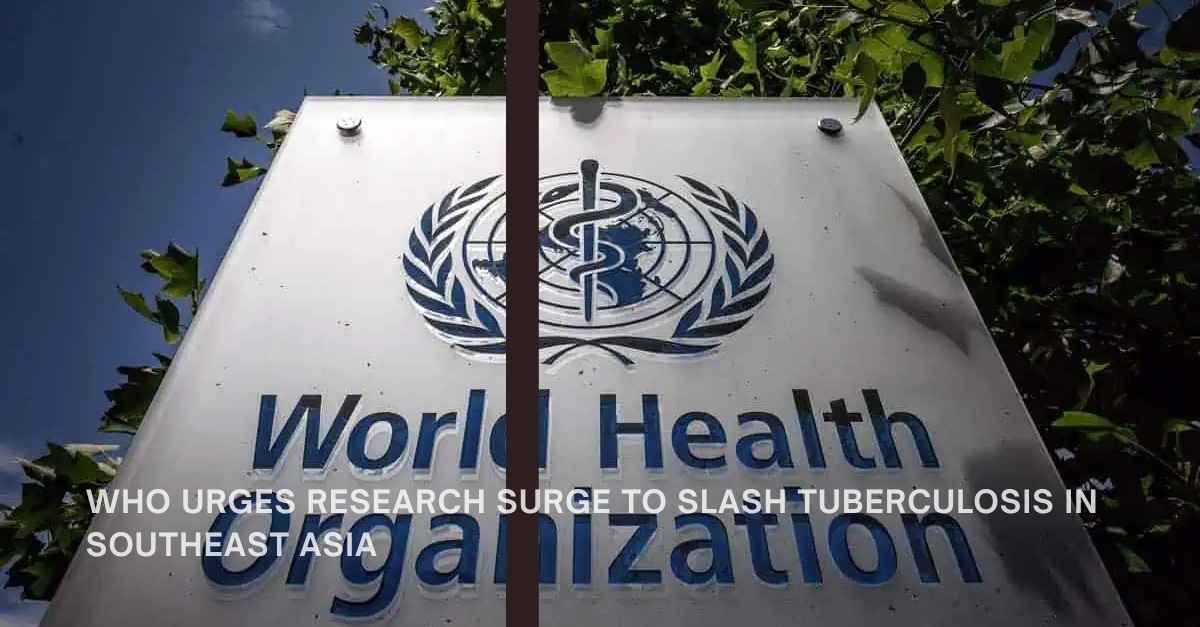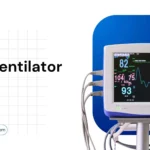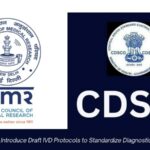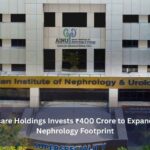5th August 2025, India
Scaling Research Efforts to Defeat Tuberculosis in South-East Asia
On 5 August 2025, the World Health Organization (WHO) made a fresh and emergent appeal for the accelerated scale-up of research, innovation, and international collaboration to fight tuberculosis (TB) in the WHO South-East Asia Region. This region where densely populated nations like India, Indonesia, Bangladesh, Nepal, Sri Lanka, Myanmar, and others continue to have a disproportionate burden of the global TB disease. For 2023 alone, there were approximately 5 million new cases of TB and 600,000 deaths due to TB reported globally, which is close to half the global burden of the preventable and curable disease.
Despite decades of effort and multiple national and international commitments to controlling TB, the region’s progress has been unequal and much too gradual. The lingering aftereffects of the COVID-19 pandemic interrupted TB services throughout much of the region, causing delayed diagnosis, interrupted treatment regimens, and greater transmission in communities. Although some progress has been achieved in cure of treatment and reporting of cases since the outbreak of the pandemic, these are still far from sufficient to bring to fruition the ambitious targets set out in the WHO End TB Strategy, i.e., a 90% reduction in TB deaths and an 80% reduction in new cases by 2030.
The WHO’s most recent appeal emphasizes the pressing requirement to move away from conventional measures and rather embrace a forward-looking, innovation-driven response one that bridges top-level science, people-centric care, and social protection systems to decrease the complete spectrum of TB’s health, economic, as well as social impacts. In particular, the WHO indicates that quicker investment in research and innovation like the shorter and more efficient cure regimens, new test development, digital compliance monitoring devices, and vaccine development will be the order of the day if South-East Asian countries are to break the chain of transmission and experience reductions in mortality and morbidity rates.
Post-COVID Rebound and Persistent Challenges
- After the COVID-19 pandemic, TB notifications increased. In 2023, 3.8 million people in the region initiated TB treatment, and the proportion of “missed cases” went down to 22%, significantly lower than the 44% proportion seen in 2020.
- To reach WHO End TB Strategy objectives of reducing TB incidence by 80% and TB deaths by 90% by 2030, all of these developments will fall short. To close the gap, political commitment and constant innovation are needed.
Building a Research-Driven Response
WHO conducted a three-day virtual workshop called “Advancing Research and Innovation to End TB”, where TB researchers, program managers, policymakers, civil society organizations, and donors were convened. The intention was to rank and align research priorities for the region and align them towards rapid development and implementation of new tools and technologies.
Dr. Catharina Boehme, Officer-in-Charge for WHO South-East Asia, emphasized:
“Achieving the ambitious targets requires collaboration to accelerate research and innovation. It requires the adoption and use of new tools, technologies, and drugs… Ensuring timely and equitable access to these innovations remains critical to achieving impacts at scale, leaving no one behind.”
Key Research and Innovation Priorities
Participants of the workshop outlined several urgent areas of research and innovation:
- Strengthening South–South collaboration and sharing regional research data
- Advancing vaccine development and preparedness
- Addressing social determinants of TB, including undernutrition and climate vulnerability
- Expanding digital diagnostic tools, including screening and adherence technologies
- Conducting operational research on shorter treatment regimens, new diagnostics, and social protection mechanisms
Although more than 3,000 tuberculosis-related research articles have emerged from the region in past years, their practical adoption has been uneven.
Political Commitment and Regional Alignment
South-East Asia’s governments have made notable commitments in recent years, including through the Gandhinagar Declaration adopted in August 2023. This regional pact emphasized multisectoral coordination, integration of TB services into primary care, and the adoption of new technologies. However, despite these policy efforts, the region faces a US$2 billion annual funding gap to fully meet its end-TB targets. In the year 2023, domestic investments totalled around US$1.1 billion, which is significantly short of the estimated US$3 billion needed.
Equity at the Core of Innovation
WHO has highlighted the uneven impact of TB on marginalized and vulnerable groups. 30% to 80% of TB-stricken families in the area have catastrophic out-of-pocket payments for diagnosis and treatment. In the success of novel interventions, WHO calls for social protection measures such as nutrition supplements, direct benefit transfers, and community-based programs to be incorporated.
Country-led models such as Nepal’s TB-Free Pallika and Myanmar’s multisectoral coordination system offer blueprints to bring social and health innovations into localized practice.
Why It Matters: Beyond Biometrics
This renewed research push matters because:
- TB is both a health and social issue, worsening poverty and inequity
- A strong research ecosystem across the region will lead to sustainable, scalable solutions
- Digital and biomedical innovation, when made accessible, can transform outcomes
- Aligning innovation with local and community voices ensures interventions are contextually relevant
Summary Table: WHO Regional Research Priorities
|
Parameter |
Detail |
|
Research scale-up & innovation |
Accelerate diagnostics, vaccines, and drug development |
|
Equity-driven access |
Reduce barriers to care via social support mechanisms |
|
Regional collaboration |
Promote knowledge exchange across countries |
|
Policy alignment |
Harmonize with national commitments and global TB targets |
|
Community integration |
Empower local responses through people-centered models |
Conclusion
The World Health Organization’s call for speeded up tuberculosis (TB) research and innovation is a turning point in the world fight against one of humankind’s oldest and most lethal infectious killers. TB has quietly taken millions of lives for centuries, reaching the poorest and most vulnerable most frequently.
The significance of this watershed cannot be overestimated. As strong evidence grows that aged, treatment-oriented methods by themselves can’t hold back the waves, WHO’s realignment towards a research-led, innovation-driven model is the starkest option. It recognizes that political resolve, scientific advancement, better health systems, and unwavering community activities will be needed to fight tuberculosis instead of only using medications. This is especially true in South-East Asia, where progress is still hampered by structural injustice, malnutrition, and limited access to healthcare.










